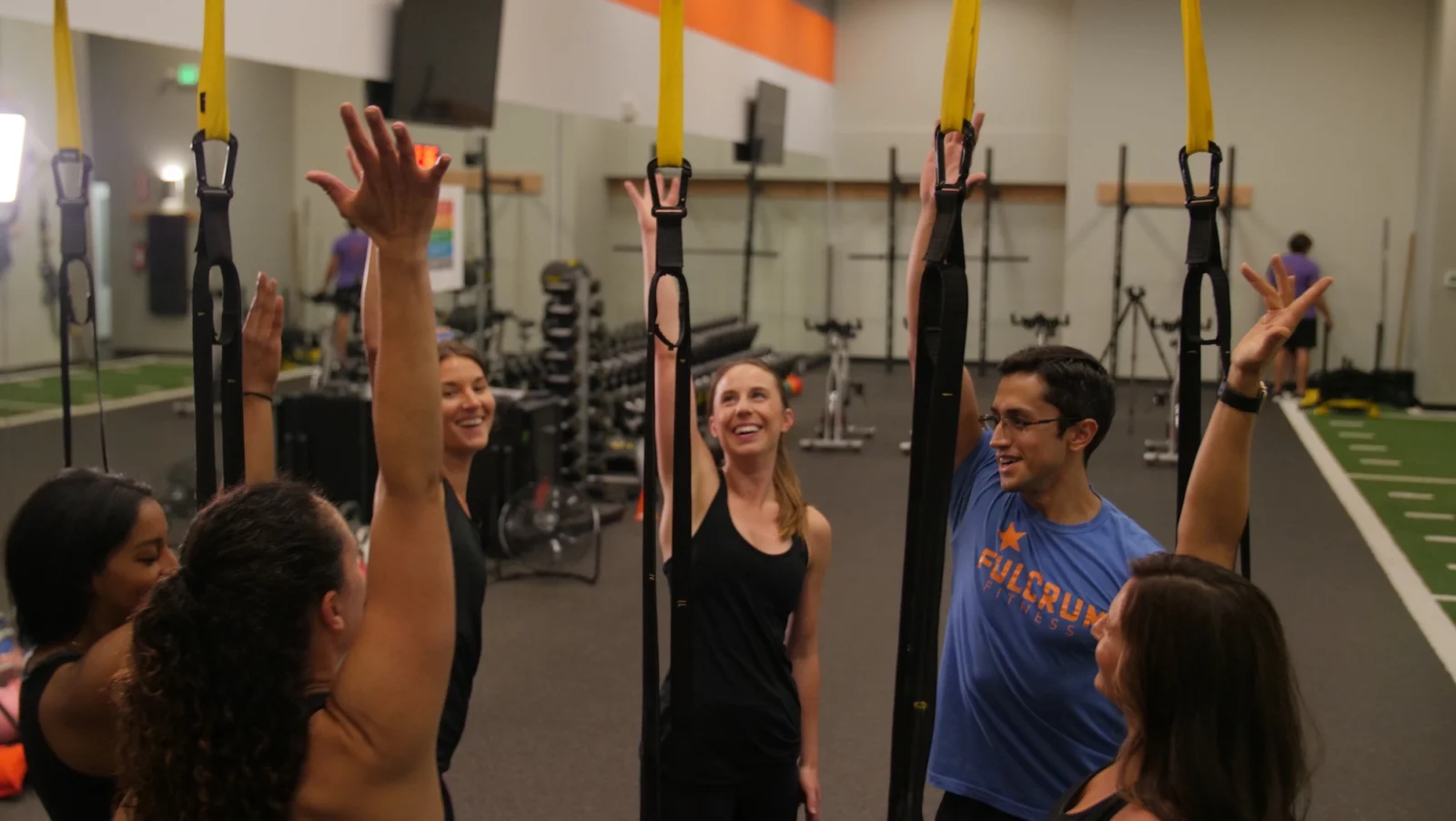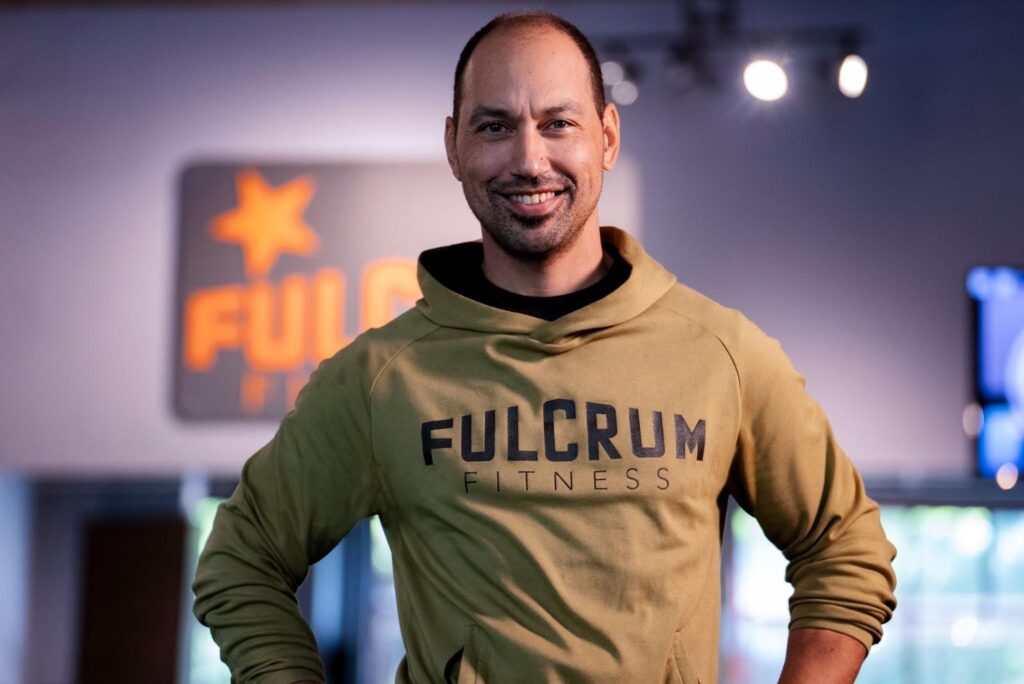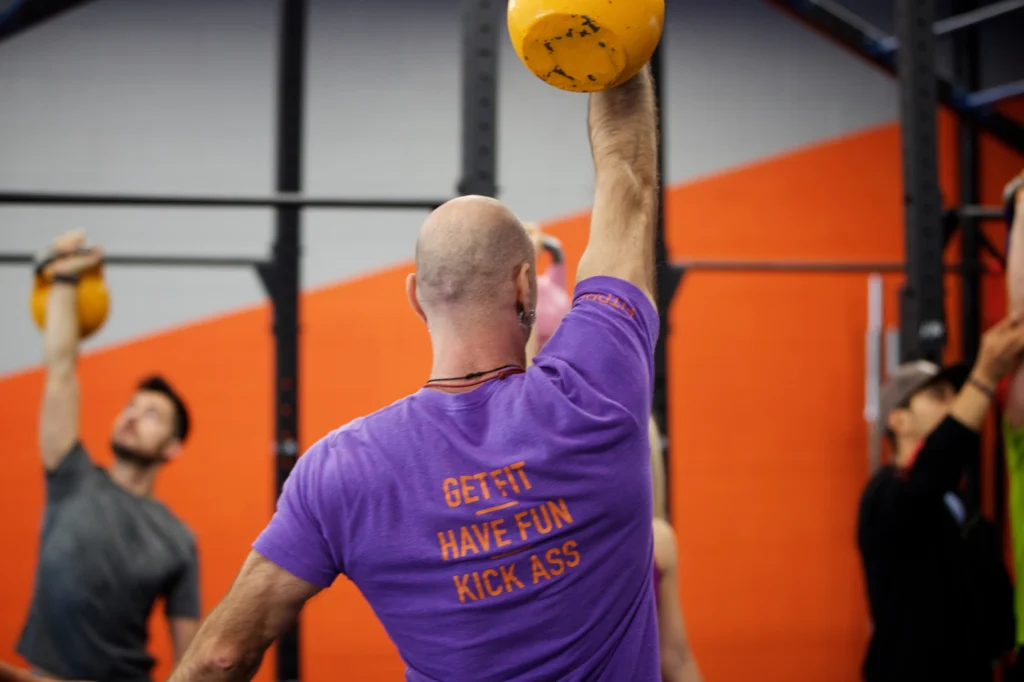Fulcrum Fitness Brings the Boutique Studio Experience to Big Box Gyms
Partnership
Sponsored By Fulcrum Fitness

Fulcrum offers an out-of-the-box solution to a trifecta of increasingly common problems for big box gyms: dwindling membership numbers, lost revenue and unused gym space
Big box gym owners face a unique set of challenges. Unused spaces are collecting dust, and many gyms are losing clientele to smaller boutique studios. Fulcrum Fitness, a functional fitness brand out of Portland, Oregon, has come up with a solution to help gyms increase revenue.
While Fulcrum franchises its own boutique fitness studios, the brand also offers what it calls an “in-club” model, where big box gyms can essentially open a Fulcrum within their existing facility. Space that was previously not in use suddenly becomes a revenue driver. Plus, the combination of the gym’s existing real estate with Fulcrum’s expertise in marketing and training leads to an unparalleled fitness experience for gymgoers seeking more social fitness options.
The Fulcrum Experience
A typical Fulcrum offers three main ways to work out: personal training, small group and team training. Trainers create scientifically backed, safe workouts for their clients using dumbbells, kettlebells, barbells, HIIT and full-body calisthenics. Instead of using a one-size-fits-all methodology, Fulcrum is unique in that it’s essentially scaled personal training.
Big box gyms can add Fulcrum’s community feel and smart training to retain existing clients and attract new ones.
“This is an out-of-the-box solution to any gym wanting to incorporate a soup-to-nuts training system without having to come up with it themselves,” says David Levy, founder and CEO of Fulcrum Fitness.

Fulcrum is completely hands-on when it comes to implementation. During the initial consultation call with the gym owner, Fulcrum discusses startup costs and financing options, which they can help with.
“Once a plan is agreed upon, Fulcrum reps do a virtual site visit, develop the equipment layout, and set up an implementation schedule complete with a marketing calendar,” Levy explains.
Before launch, Fulcrum conducts training, which elevates qualified coaches. This creates a certain level of consistency in the workouts for clients. At the same time, it gives trainers a chance to be creative with workout design.
Long term, Fulcrum offers continued support with marketing and operations. They do this via online education and hosting workshops.
“It keeps the entire community of coaches and operators updated with the latest platform upgrades,” Levy says.
A Key Revenue Driver
First and foremost, adding a boutique studio to an existing space creates a unique opportunity for big box gyms to increase revenue.
“Fulcrum creates more access points for existing members to get involved, which builds a symbiotic relationship with the host gym,” Levy says.
For a member who was working out once or twice a month, they now have variety in their workout routine, so they’ll come more often. Fulcrum fuels revenue that may have been lost to those canceled memberships. It can also attract new clients who are looking for a more hands-on approach during their workouts. Gyms can let prospective clients know about this additional amenity included in their membership – access to Fulcrum’s smart training system.
Also, by utilizing the boutique’s existing branding which is new and exciting, gyms can attract new members. Levy calls it “fresh marketing in saturated markets.”
A Fulcrum in-club studio solution typically generates between $30,000 to $50,000 a month in revenue for 2,200 square feet, which averages out to $227 per square foot per year.
“We can take that space doing nothing and make it do this,” Levy says.

The Answer to Unused Gym Space
Fulcrum wants to leverage unused gym space, which is becoming increasingly common in big box gyms.
“In this case, we’re talking about clubs that have aerobic rooms that are no longer being fully utilized or other parts of their facility where equipment is gathering dust that could be converted into functional fitness space.” Levy says, referring to this as “bringing existing clubs into the 21st century.”
Another option is if a gym has an underperforming functional fitness space. Those spaces may benefit a small number of clients or personal trainers, but they generally don’t provide added value to a majority of a gym’s members. Converting that unused area into something boutique-like can foster community in a space that may traditionally feel intimidating or overwhelming.
Gym Owners Reap the Benefits
Many big box gymgoers are looking for the smaller boutique fitness community feel within their existing club. Adding a Fulcrum would help engage a current client base that is currently less active or is looking for a more catered class experience. Levy refers to this as bridging the gap between boutique and big box gyms.
“Without having to sell their gym and open a competing business model they can just incorporate what we view as the future of fitness into their existing space,” he says.

Retaining members for a long period of time is often a battle for big boxes. Levy chalks it up to struggling to create a meaningful community.
“Fulcrum creates a place for fostering repeat visits and the creation of routine for folks, which also leads into excuses for events inside and outside of the gym,” he says.
Tapping into a niche group of like-minded individuals within the greater demographic is what ultimately keeps people coming back.
In a Digital World, Fulcrum Relies on Human Connection
What sets Fulcrum apart from other “in club” solutions is the brand’s ability to solve for the human connection in a digital-heavy world. While some fitness studios rely entirely on a screen to teach movements, Fulcrum prides itself on its coaches’ ability to provide form feedback.
Levy says Fulcrum is very “choosy” with its use of technology.
“Unless it provides an extraordinary efficiency benefit, we like to allow for trainers to be in charge of the experience,” the Fulcrum founder says. “That means making personalized adjustments for people in class and also demoing the movements so that people can ask questions and have a conversation around what’s going on.”



